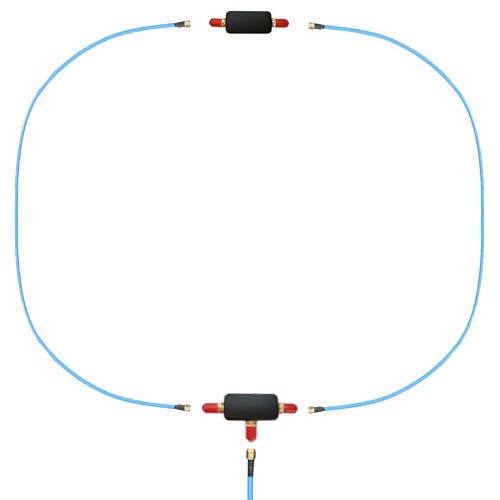 Many thanks to SWLing Post contributor, Bill Hemphill, who shares the following guest post:
Many thanks to SWLing Post contributor, Bill Hemphill, who shares the following guest post:
 YouLoop Antenna Fun
YouLoop Antenna Fun
by Billy Hemphill WD9EQD
Like many listeners, I live in an antenna restricted community. While I have strung up some hidden outdoor wire antennas, I have found that they didn’t really perform that much better than just using the telescoping antenna with maybe a length of wire attached. The biggest problem (whether indoor or outdoor antenna) has been the high noise floor.
A few months ago I bought an AirSpy HF+ Discovery SDR receiver. I had already owned a couple of SDRPlay SDR receivers, but the high noise floor limited their performance. I had read good reviews about the AirSpy, especially its performance on the AM Broadcast band and the lower shortwave bands.
I have about 80 feet of speaker wire strung from the second floor and across the high windows in the living room. This does perform fairly well, but the high noise floor still exists.
A couple of weeks ago, I bought the YouLoop Magnetic Loop antenna from AirSpy. I gave it a try and am amazed at the lower noise floor compared to the indoor wire antenna.
Wire Antenna vs. YouLoop–some examples:
Dramatic reduction in the noise floor. I’ve done a lot of playing around with it and find that the YouLoop picks up just about the same stations as the indoor wire antenna does. But with the lower noise level, the YouLoop makes it more enjoyable to listen. Overall, the YouLoop is now my main antenna.
YouLoop with a Portable Radio
It works so well with the AirSpy, I started wondering if I could use it with a portable radio, like the Tecsun PL-880. But the AirSpy website has the following note:
Note: It is very likely your third party radio will not be sensitive enough to operate with the YouLoop properly. We have even seen self-documented failed attempts to build pre-amplifiers to compensate for the lack of sensitivity and/or the required dynamic range in third party radios. Use your brain, and eventually an Airspy HF+ Discovery.
Doesn’t sound like it will work with portable radios. BUT, I’m always one to try anyway.
Since the YouLoop has a SMA connector, I bought a SMA to 1/8” phone jack cable. Plugged it into the PL-880 antenna jack and found I had almost a dead radio. Very few stations heard. But in playing around, I accidentally touched the phone plug to the telescoping antenna and instantly got strong signals.
I did some very unscientific tests. I attached the YouLoop through the side antenna jack, did an ATS scan, then did the same with the YouLoop clipped to the telescoping antenna. Also did a scan with just the telescoping antenna fully extended.. I got some very interesting results. These were done one after the other, so there can be differences in signal fading, etc.
I have repeated the above test several times at different hours. While the actual number of ATS stations varied, the ratio between them remained fairly consistent to the above numbers.
From the above, it appears that the telescoping antenna circuit is more sensitive than the 1/8” antenna jack circuit. Maybe some attenuation is being added to the 1/8” jack since it’s more likely a higher gain antenna would be used there. Can anyone confirm that the circuit indeed attenuates thru the antenna jack?
The YouLoop seems to be a decent performer when directly clipped to the telescoping antenna. While not as good as a high gain outdoor antenna would be, it definitely is usable for indoor uses.
I also tested it clipped to the antennas of some other portable receivers. Tecsun S-8800, PL-330, Panasonic RF-2200 and Philco T-9 Trans-World receivers. All showed an increase over just using the telescoping antenna.
Some interesting notes:
The Tecsun PL-330 saw the same reduction in signal when directly plugged into the antenna jack as opposed to clipping on the telescoping antenna.
The Tecsun S-8800 did not show that much of a drop. I basically got the same number of stations when clipped to antenna as when I connected to the BNC jack:
 In conclusion, I find that I can use the YouLoop with my portable radios to increase the signals on strong stations when used indoors. And it is quite the performer when used with the AirSpy HF+ Discovery SDR receiver. It easily portable and I find that I move it around the house as I need to. I just hang it off a window curtain rod. I may just order a second one so that my family room radio has one permanently attached to it.
In conclusion, I find that I can use the YouLoop with my portable radios to increase the signals on strong stations when used indoors. And it is quite the performer when used with the AirSpy HF+ Discovery SDR receiver. It easily portable and I find that I move it around the house as I need to. I just hang it off a window curtain rod. I may just order a second one so that my family room radio has one permanently attached to it.

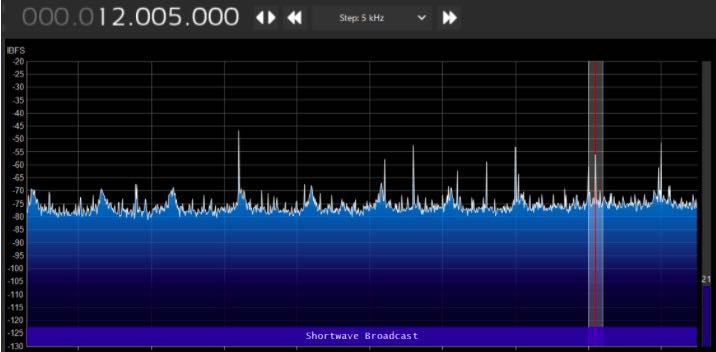


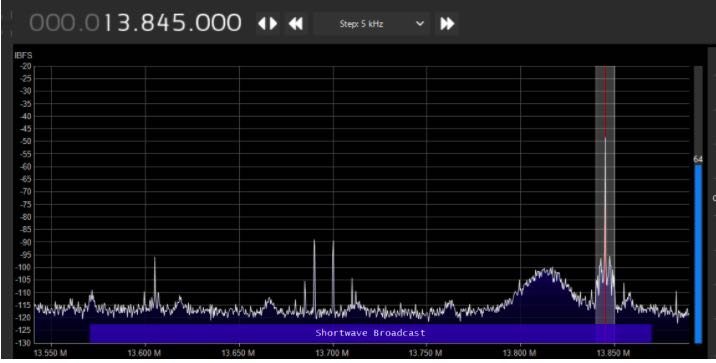
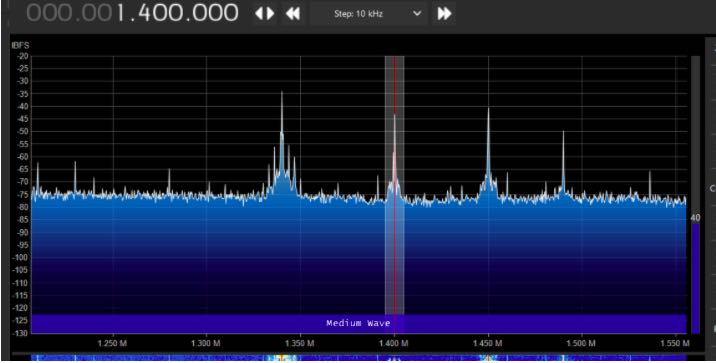
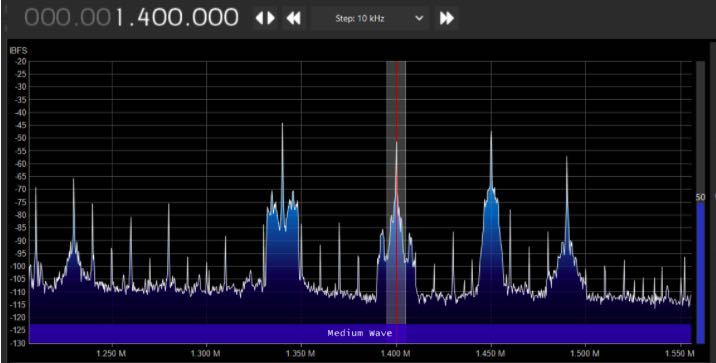
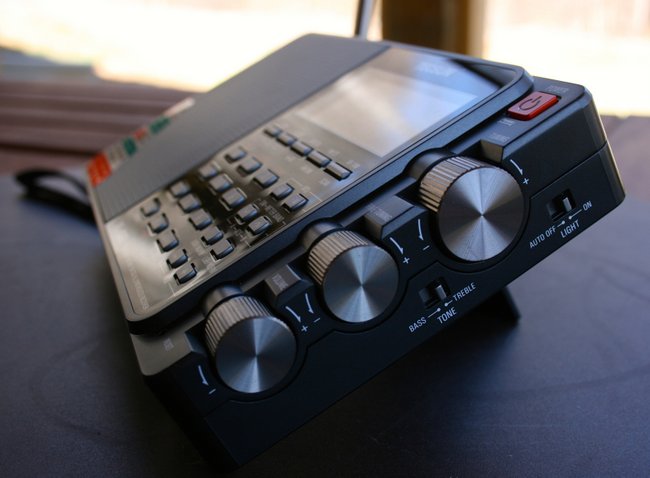
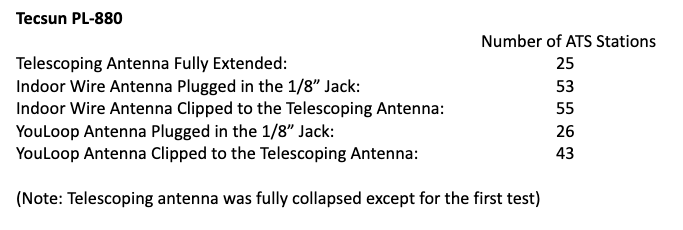
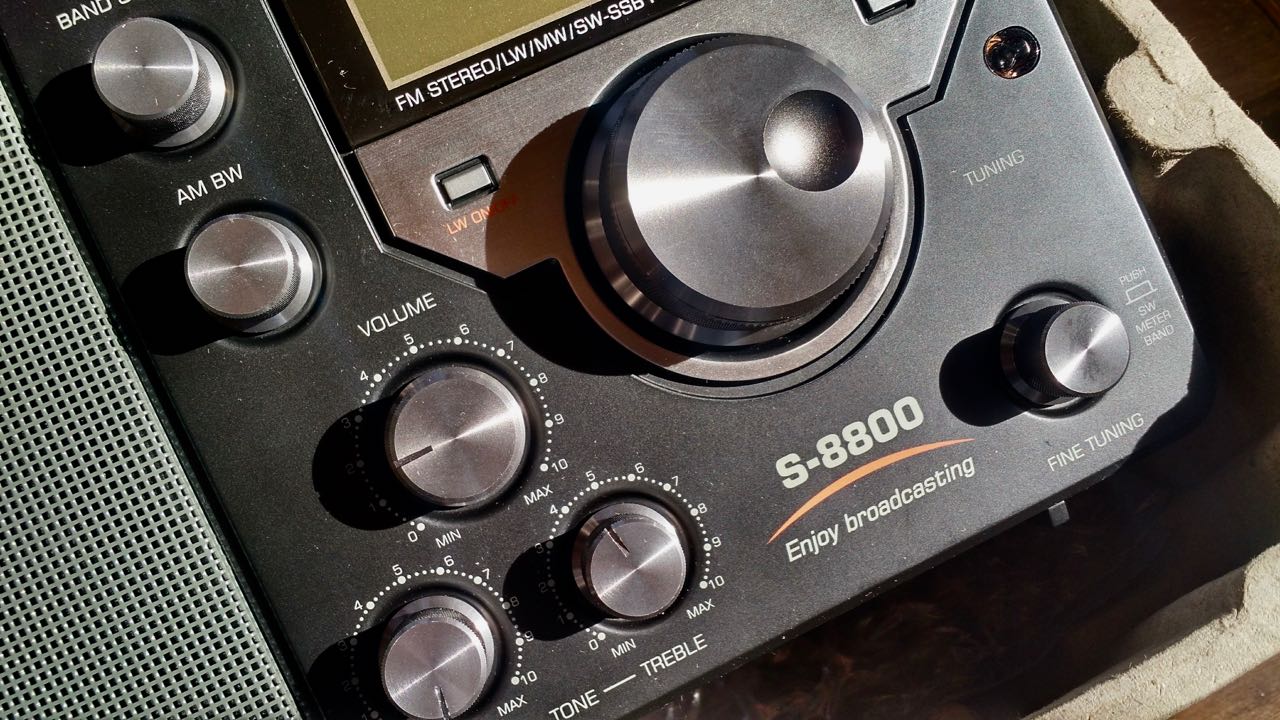
I have changed the two 1-m blue coax elements of my YouLoop to two 1-m 5DFB elements. I feel it’s less noisy and a bit more sensitive now.
I have a problem. I just upgraded my license to Technician from being away 40 years. I didn’t get to do much of anything , for having to stop and go to school. I recently bought a Yaesu 991a transceiver and a Harvest V2000 antenna. I need an ELMER and someone to get me started. I’m basically don’t know how to use base transceivers. I have a Yaesu FT3D handheld
After several years of playing with both homemade and ITEAD made airspy youloops, I have come to the same conclusion as many other posters. Yes, the balanced split shield arrangement is less sensitive to noise, in particular EMF discharges such as those caused by a nuclear blast, which is what the original developer of the mobius loop, USAF researcher Dr Carl Braum, designed it for. They also designed further arrangements with multiple layers of mobius loops nested inside each other, for progressively greater resilience to EMF.
However, EMI != noise. The USAF also did qualitative vector analysis on waves transitioning the shield. They found that frequencies which had a wavelength larger than the gap on the shield traveled on the shield itself, making the mobius loop more like a split loop in performance. The USAF also did further research that I was happy to consume and did, leading to vast improvements in my small magnetic loop designs.
My takeaway from my research was thus:
A: the miniature transformer in the youloop connects all grounds together. Pop off the cover and measure it yourself, there is no isolation. It behaves not unlike a resistive circuit with low resistance. An ADT6-1T+ or ADT1-2T+ from mini circuits offers equivalent return and inductive characteristics and also adds galvanic isolation.
B: the RG-402 used in the youloop product IS an expensive and high quality cable, but poorly suited to making antennas. Shielding the antenna only reduces gain, it doesn’t improve the noise characteristics at all. It is better to use a large central conductor with a low impedence, such as solid core AWG 16, and make a loop which is large(5 foot diameter), the gain will be better. The electrical aperture of the antenna is what determines the performance and also the capacitance/inductance, but for a traveling wave magnetic loop which is fully shorted to itself(a closed circuit) there is only parallel capacitance to consider, which is a factor of the surface area of the antenna, and impedance, which is a factor of the conductor. Increasing the loop size beyond a 5F diameter will improve reception at progressively lower frequencies into MW and LF, and shrinking it to a 2F diameter will reduce noise levels above VHF, but for 59khz-128Mhz, a roughly 5 foot diameter loop is very suitable as long as it is placed appropriately.
To protect such an antenna, it is useful to obtain nylon spacers that have a hole in them, some hot glue, and some half inch pex. The wire is then secured to periodic spacers and suspended in the center of the PEX.
To add some noise reduction, it is possible to use aerospace grade carbon fiber sleeve material, suitably spaced from the central conductor. USAF research indicated that carbon fiber was a poor shield at lower frequencies but a good shield at higher frequencies where the wavelength is smaller and nearer to the size of the fiber itself, which is a good electrical, but not magnetic, conductor, with a resistance of around 1 ohm per foot. Using kapton tape, gloves, a mask, and suitable PPE, it is possible to treat carbon fiber sleeve material as if fiberglass and cut it appropriately, and then secure it in place in the traditional split shield configuration, grounding it at the bottom. The proof that carbon fiber IS a suitable shielding material becomes apparent the moment you don’t leave a gap, whereupon it acts as a genuine faraday cage and terminates all signals.
One might then take 3/4 inch PEX, which has a diameter a little larger than 1/2 inch + the sleeve, and double-layer the antenna body, and then take this superstructure and secure it on some housings and terminate it to your transformer.
Notably, the ohmic resistance of a wire loop is approximately 120 ohms. It varies by frequency, of course, but for the relevant frequencies in question whether it is a small YouLoop or a 12 foot by 12 foot square loop, the resistance is approximately 120 ohms. It is therefore equally suited to transformation to match with a F-connector terminated quad shield RG-6 coaxial(which are very low loss, readily available, and cheap), which can then be transformed at the other end to the desired 50 ohm impedance and thus fully isolated at both ends, forming a loop internal to the coaxial which cancels out common noise to a great degree.
This configuration reduces noise over other arrangements and improves signal reception. The use of a suitably sensitive receiver, possibly also with a low-noise differential balanced amplifier(such as a wellbrook, although I am not yet rich enough to experiment with one), provides an ideal listening system for any location, even indoors(although SNR of course is worse and signals are weaker). When this antenna is placed in a good receiving environment and connected to a well shielded, isolated, linear powered, single-ground-path grounded receiver(of course, you can also connect all antenna system components beyond the receiver protecting galvanic isolation by gas diode/4700ohm beverage ceramic diode to add some ESD protection), one has the absolute best possible reception possible short of bringing out the big guns(commercial skyloop arrays with complex log periodic arrangements, beverages).
All of the above, of course, is strictly limited to SWL, MW, and FM listening audiences, and does not apply to transmitting systems.
Improve the impedance match, and it is possible to effectively use a portable receiver with a youloop. For example, using a cheap eBay preamp, preferably with added output attenuation to not overload a portable.
Alternatively, a basic antenna tuner, even just a simple L match circuit. I have used a MFJ-16010 between my youloop and a Grundig G3, though I did have to sometimes swap the input and output connections at the tuner depending upon the impedance loading characteristics of whatever band I was monitoring at the time.
My youloop is currently hanging in a window as a fallback HF antenna when disconnecting outside antennas due to storms. In such a case, it tends to be used in conjunction with a small eBay preamp or a MFJ-1020 preamp/preselector with whatever radio I am using at the time.
Thanks, this reminds me that I *STILL* haven’t swept my YouLoop on my MiniVNA or RigExpert! If I can remember, I’ll do this soon & post the results here, or maybe one of you can do it if you have a NanoVNA or whatever handy.
Remember, unlike an E-Field antenna (wire, duck, etc), the influence range of a H-Field (magnetic) responding loop antenna is far smaller, but still not zero, so mounting WILL affect it; like any other antenna, though, sometimes this can be used to advantage for better matching (despite this being receive-only), directionality, etc.
I’ll try to answer everyone’s comments/questions in this single post.
First some additional background information. I am a casual listener. I enjoy listening to programs on the radio – not attempt to receive every weak signal that exists. Yes- this pretty much limits me to several of the higher power stations. But that is fine with me.
I live in a typical restricted community where the houses are fairly close together. The Association has people coming around to check that everyone is complying with the rules. This limits what can go outside the house to that which cannot be seen or is at least low profile. At present, moving is not an option.
I have had several low profile outside antennas and have had limited result with them. This is mostly due to the fact that the entire neighborhood has a very (extreme) high noise level. I can take a portable radio outside and walk the entire neighborhood without determining exactly where the noise is coming from. It’s just omni-present.
One more Final Comment- Over the Thanksgiving period, I took the YouLoop, AirSpy, and computer to my sister’s house in Indiana. A quick test at her house was a total failure. The noise floor was extremely high and I had all sorts of noise signals sweeping cross the water fall. Her neighborhood has several houses that were fully decorated for the holidays – something similar to the Christmas Vacation Movie. So I think a lot of noise was coming from that. So magnetic loops won’t necessary give less noise. I wonder if a lot of the holiday lights were LED’s. I didn’t really waste any time investigating.
Now some Comments/answers to the people who replied:
TomL: I haven’t been very successful with nulling out the noise. On the AM-Broadcast Band, I use a couple of Tunable Loop antennas with one peaking and one nulling a different station on same frequency. The two AM loops do work quite well with a low noise floor.
Marwan: If you have a 50’ long wire up 25’, then it would definitely outperform the YouLoop or most other small loops. If the YouLoop is rotated, then you might see some signal peaking when compared to the wire – especially on the AM Broadcast band. I’ve had several SDRPlay’s and did enjoy them – especially the SDRUno software. I agree that the SDRSharp software is different from the SDRUno and can be a little confusing. But I found that it does perform quite well with the Airspy and the many plug-ins are very nice to play with. And I agree that it would be nice to see the SDRUno and SDRSharp software for other operating systems.
Matt Todd: I agree that the SDR Console is nice also. They all have their features.
Bob: I just clipped the center conductor to the whip antenna.
Andrew: As I described above, my noise levels are fairly independent of inside versus outside. I’m just trying to make the best of MY current situation.
Michael Kingery: I can’t really say how well it would work with the Drake R8. But the antennal is cheap enough to give it a try.
Matt Todd: It’s nice to have several antennas (loops) to play with. I think all the small loops can perform very differently based on different factors. You might want to try using the MLA30 to peak the signal while using the YouLoop to null adjacent stations, noise etc. Or vice versa. This should work good for the AM Broadcast band. But everyone’s milage will vary.
Marco: I think Thomas has already expressed my opinion also. But the antenna is so cheap, that it was worth a try. In my case it worked for MY purpose.
73 Bill WD9EQD
Smithville, NJ
Bill,
The bottom connection of the authentic YouLoop from AirSpy is already 1:1 balun. I had a web link that described it somewhere in detail. However, it is not waterproof, so it needs to sealing with RF coax putty. Running a 50 ohm coax from there inside to the radio, and putting an RF choke on the receiver side should allow for a less noisy reception. Then turning it for the least noise and fixing it in place should be better than what it can receive indoors. I also like the idea of a larger loop aperture, which was borne out in my experiments with a loop-on-ground antenna early this year. Good luck with your experimenting!
Billy,
One trick with setting up a useful (receive-only) outdoor wire antenna on a porch I have found is to take a portable AM radio and use it to find the loudest noise. This should be able to be done with the YouLoop at the lowest frequency you want to use, like say 6 MHz.
If there is a main noise direction found, one can then setup a one wavelength loop using multi-conductor wire (the wires connected in succession like a folded dipole) with a 1:1 balun feedpoint, then 50 ohm coax into the condo/townhouse.
One can use 5 conductor thermostat wire from home depot, for instance. One wavelength at 6 MHz is about 165 feet. Connecting the multi-conductors like a folded dipole is Additive, so only 33 feet is needed, which can then be wrapped around the porch in a way to null out the noise in the direction that the radio/YouLoop found. One wavelength loops are receptive Broadside to the plane of the loop and nulls along the plane of the loop.
Maybe people can experiment with this method of nulling out noise like I have.
During last year’s Black Friday’s sale I purchased an Airspy HF+ Discovery, and a SpyVerter R2 Upconverter, ( I don’t even know if I needed to buy this one for my purpose, shortwave listening only). I followed that with a YouLoop Antenna. I’m sorry but I have never seen any benefit using the Youloop. I am using a home brewed 50′ long wire antenna stretched between two 25′ flag poles and connected to coax wire feeding to my house. I get better results using. And this past Black Friday I bought a SDRplay RSP1A. I have to say I am pretty impressed with the RSP1A. I also find the SDRuno to be less complicated and more simple than the SDRSharp. I watched many YouTube videos to get better understanding of the SDRSharp but it seems to be too complicated.
If someone can post some info on how to make the YouLoop more effective and the SDRSharp easier, it would be most appreciated. As for now I will continue to use my long wire Antenna.
I wished, and this is for both the SDRuno and SDRSharp developers, you would release Mac compatible edition of the software.
Cheers Everyone And Happy Holidays!
I’d suggest you give sdr console a try; I think it’s the best sdr software
When you “clipped” to the whip antenna, did you clip from the center conductor & leave the shield unconnected?
Bob
Bringing a wire antenna all the way inside a building, and then complaining about noise level, seems a nonsense to me; sure, in a past, when SMPSUs, Plasma TVs and computers weren’t an issue, and when the “shack” was a wooden cabin far from house, it could work
But nowadays. bringing an active part of the antenna inside is a very bad idea; I suspect that, connecting the wire antenna to a balun, sitting outside, in the clear, and using a run of coax with chokes from the balun to the inside. would be a FAR better idea
Then, for sure, using a loop fed with coax gave you better results
But sincerely, in my book, it’s a very unfair comparison
I have just got back to the hobby and I too live in a townhouse with no external antenna alowed I have hung a wire out the second floor window and reception is so so. Would this loop work with my Drake r8 and how woul I connect it to the receiver
Thanks for the article
I was rather underwhelmed with the youloop. I took mine out to a quite RF area with an RSPdx and compared it side by side with the MLA30. The MLA30 out performed it across the board. The youloop did ok, not great on AM. The higher in frequency I went the worse the performance got. Admittedly I did not play with the youloop and configurations all that much. I haven’t really touched it since then as I usually use the MLA30 or one of my ham radio antennas I may have set up. Maybe I should give it a second chance.
That’s not a fair comparison because the MLA30 is active / amplified while the YouLoop is not; this is actually the very reason I bought the YL vs MLA because the other amplified antennas I bought from SV2CZF the Greek guy were OBLITERATED by the local AM / MW stations. This is also partially why the YL fails in most receivers in general (or, to put it another way, why you need high dynamic range). As an un-amplified loop I can also put an AM / MW band-stop filter in before any amps, as it should be.
The better response at lower bands is also why I did the YL: the Moebius design actually works better at lower frequencies and the YL picks up VLF nicely (when you can get a low enough noise floor). This can be improved by making a multi-turn Moebius loop such as by using 8 conductor Cat-5 SHIELDED twisted pair and wiring the middle cross-over with each turn. (This isn’t my idea, the design is outlined elsewhere as an improvement to the YL for improved [V]LF & MF.) The catch is you have to re-design the balun as the impedance is different and the balun’s presence is very important for this antenna.
It is absolutely a fair comparison. They’re both intended for much the same purpose, of roughly the same size, and about the same price. Comparing two similar antenna of which someone might choose is absolutely a fair comparison.
YouLoop has less noise simply because it receives less than any piece of wire. In my experience it was a useless expense, it ended up in the bottom of the drawer.
It’s true that pretty much any magnetic loop antenna defeats QRM because, in a sense, it’s defeating all electrical signals. But my experience with the YouLoop is identical to Bill’s. The HF+ Discovery has such brilliant dynamic range, that it can work with the small aperture non-amplified loop. I’ve used the YouLoop in hotel rooms when I couldn’t hear anything for QRM and actually had reception so good I could DX with it.
Part of the magic here, though, is working with a receiver that has excellent dynamic range. As Bill noted, results were much more mixed when using a Tecsun portable.
Great review. How does this one compare to others sold on Amazon?
Thanks,
Tom Stiles
Well done! I was curious about the exact thing you tested. Very helpful!